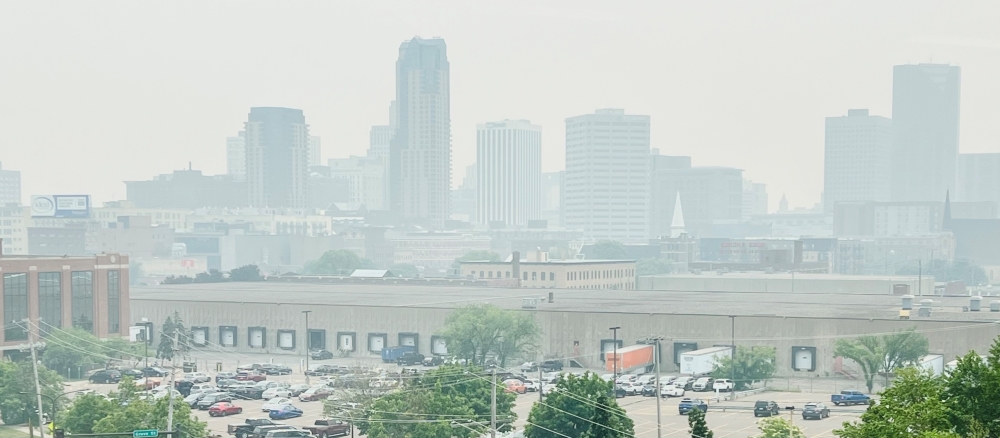While more than normal, alerts not expected to reach 2023 level
Minnesotans should expect more air quality alerts than normal again during the summer of 2024, driven by anticipated high temperatures and more-than-average number of wildfires, Minnesota Pollution Control Agency (MPCA) meteorologists announced today.
Modeling from MPCA and its federal partners highlight the persistence of drought across parts of Canada and Minnesota and other factors that can contribute to large wildfires that ultimately impact air quality.
These predictions come on the heels of a challenging 2023, when Minnesota had a record 52 air quality alert days. Of these alerts, 16 were due to fine particles from wildfire smoke, and nine reached the red AQI category, signaling risk for everyone.
“Wildfires in Canada and other states have a significant impact on Minnesota’s air quality, and last year was profound,” said MPCA lead meteorologist Matt Taraldsen. “Our meteorologists are closely monitoring air quality around the state, and we are committed to providing accurate information promptly so that everyone can stay informed about changing conditions."
Though not projected to reach the level of 2023, wildfire smoke will impact Minnesotans’ quality of life and outdoor plans this summer as we see more impact from climate change in the state, according to MPCA experts. Wildfires are becoming larger and more frequent during the summer months in the U.S. and Canada. Warmer temperatures and persistent drought conditions make it easy for fires to start and quickly spread out of control. Smoke from these wildfires can travel thousands of miles.
Wildfires/drought
Rain in many parts of Minnesota during the last few weeks has helped improve drought conditions, with none of Minnesota currently in severe drought, 11% in moderate drought and 28% abnormally dry. Long-term forecasts call for average rainfall this summer with above-average temperatures.
Forecasts show parts of Minnesota and much of Canada will continue to experience some degree of drought throughout the summer. Current conditions show abnormally dry to moderate drought in much of northern Minnesota, while extreme southeast Minnesota is experiencing abnormally dry to moderate drought conditions, according to the updated drought map released today.
Minnesotans can expect to see more wildfire smoke than average; forecasters predict greater than seven alerts; more air quality alerts compared to an average of five to seven alerts per year. Last year set a record for air quality alerts in Minnesota with 21 issued that spanned a total of 52 calendar days.
Ozone
Slightly above-normal temperatures could increase the risk of alerts due to elevated surface ozone, particularly in early summer. Forecasts predict a slightly above-average ozone season of two to four days, one day more than the yearly average. Regions most vulnerable to ozone impacts include the suburban Twin Cities area and Rochester metro areas. If persistent wildfire smoke occurs it may also aid in the generation of surface-based ozone, which was observed during the 2023 season.
About AQI and MPCA forecast information
Air quality is reported on a color scale called the air quality index (AQI). When daily average fine-particle levels reach the orange category, sensitive groups such as children, older adults, and those with respiratory conditions may feel the effects.
Learn more on the MPCA’s wildfire smoke and air quality webpage.
- The MPCA posts real-time information and daily forecasts on its current air quality conditions webpage. You can find information on a region’s primary pollutant, predicted fine particles, and forecasted ozone. This resource gives Minnesotans a clearer understanding of their region's daily air quality through accessible, understandable data.
- Residents may also receive air quality alerts by following the MPCA's Facebook and X (formerly Twitter) accounts.
Poor air quality and health
Poor air quality can make anyone sick, but some groups are more at risk to the health effects, including young children, pregnant people, older adults, people with chronic health conditions, and people who work or play outside. Limiting outdoor activities, if possible, spending time indoors with clean air, and keeping indoor air clean during poor air quality days can help. Visit the Minnesota Department of Health’s Air Quality, Climate and Health webpage to learn more.
Watch the online presentation.
